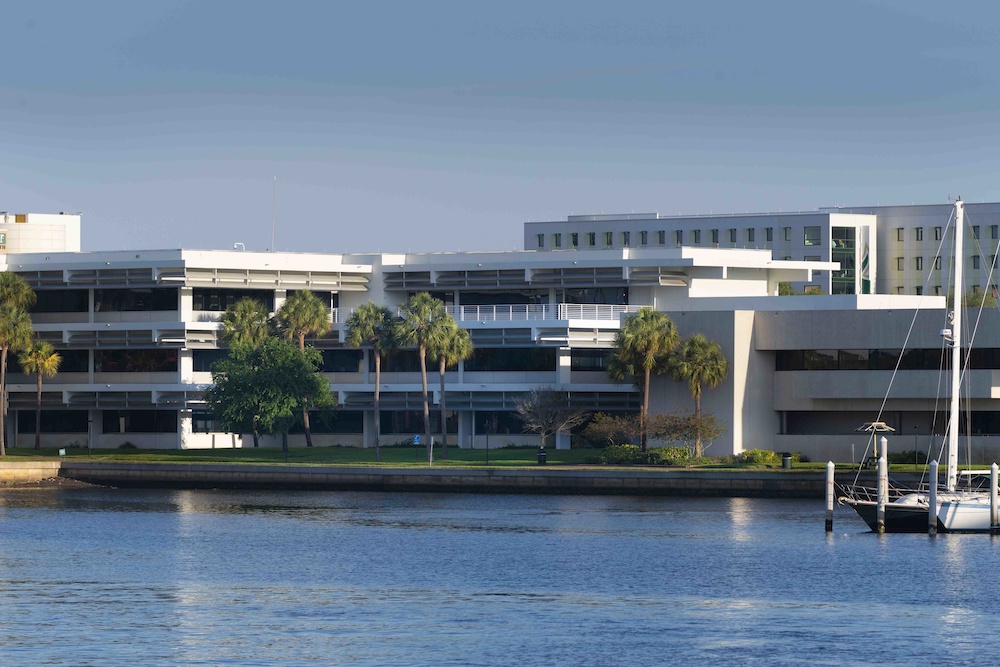By Matthew Cimitile, University Communications and Marketing
If you live in Tampa Bay, you will likely experience a hurricane or extreme storm at some point. The University of South Florida has an extensive Emergency Management Program that ensures faculty, staff and students living on and off campus are prepared and remain safe during any kind of emergency.
“The thing we always try to get across, especially to students, is to know what preparedness actually means,” said Stephen Harris, assistant director of housing at USF St. Petersburg. “Being prepared doesn’t just mean having a plan. Students need to have resources [food, water, gas in car] in place as well.”
The Emergency Operations Plan (EOP) helps to guide emergency operations on the St. Petersburg campus. Within the plan is Continuity of Operations Planning (COOP), which addresses in detail what should be done to prepare each facility – from housing to academic buildings to campus recreation - and which essential personnel will stay on campus to ride out the storm and assess damages after it passes.
“There are three stages to a storm when it comes,” said Guy Van Asten, interim emergency management coordinator at USF St. Petersburg. “First, there is preparation, which includes mitigation, and then there’s response and recovery. All three parts are covered in the EOP and the COOP. So that’s how people know what to do when the storm is coming, is here and has passed.”
Emergency planning and preparation start to take place up to seven days before the tropical storm or hurricane is expected to make landfall. Members of the emergency management team on each USF campus work with one another, as well as city, county and state leaders to address the specific needs in their community. For example, the St. Petersburg campus is situated on 52 acres in downtown St. Petersburg, with portions on the waterfront, making it a high risk for flooding.
“Our campus is in four different evacuation zones. Pinellas County has advised us that any time there is an evacuation in any of those zones, we should evacuate the residence halls and the campus,” Van Asten said.
The team also works side by side with the National Weather Service and has direct access to the forecast desk. The information helps them decide on what actions to take as the storm approaches.
In some cases, that means evacuating students living on campus. With the opening of the Osprey Suites residence hall in 2020, the St. Petersburg campus has expanded on-campus student housing from 550 beds to more than 900.
In the event of an evacuation, those students can choose where they want to go to ride out the storm.
“We give them the opportunity to leave utilizing the evacuation plan that we take from them when they apply,” Harris explained. “They tell us in the event of any kind of storm or evacuation what their plan would be, how they would get there, and if they don’t have a plan, is their plan just to stay with us and figure it out with the housing staff.”
Students who don’t have a place to go may be relocated to the USF Tampa campus under the supervision of Housing & Residential Education staff.
During Hurricane Ian in 2022, a Category 4 storm, USF campus operations closed residence halls. Some of the students in St. Petersburg were taken to the Tampa campus because it is located further inland. Others chose to activate their personal evacuation plans and rode out the storm at their parent’s, friend’s or relative’s house.
“We follow up with each student during any evacuation to ensure they made it there safely and are in a secure place to ride out the storm,” Harris said.
When campus operations close, the full-service dining facilities may also close. USF Dining works with its food service provider to determine when they close for storm events or any other kind of emergency. In some cases, essential personnel will provide minimal meals or bag lunches.
“It’s usually a function of how many residential students may have to stay on campus,” Van Asten explained. The dining website is always updated to reflect those decisions.
Residents are encouraged to have non-perishable items and other hurricane supplies in their suites or apartments. In addition, students are asked to pay attention to the latest information to inform their decisions. Any communications regarding class cancellations and campus closures, evacuations and re-openings are posted on the main USF websites and social media channels and sent to students and employees via email.
Students can start their hurricane and emergency preparation by downloading the USF Hurricane Guide. That’s where to find emergency contact information, how to plan for an approaching storm, what you will need in your disaster supply kit and how to sign up for alerts through the Emergency Notification System.
